Soil Analysis Using Chromatography
Soil Testing for Agriculture
For a farmer, soil is life. The quality of a farm’s produce hinges on the soil’s health, making it indispensable for a farm’s prosperity.
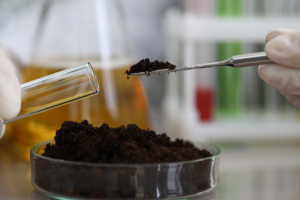
Soil testing stands as a crucial responsibility for farmers, involving various tests. Among these, chromatography stands out as the method yielding the most precise results.
Detecting contamination is a huge concern for farmers. Pesticides, petroleum, and lead are among the prevalent contaminants posing risks to soil health. While farms strive to prevent contamination, only chromatography can accurately assess soil quality and detect these contaminants, enabling proactive measures for soil preservation.
Forensic Soil Analysis
Beyond farmers, soil analysis is a routine task in forensic investigations. Crime scenes often require soil analysis, a pivotal aspect of forensic analysis.
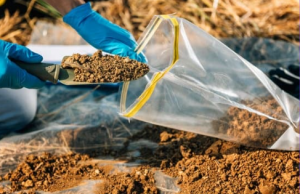
Forensic scientists employ soil analysis to unveil crucial evidence such as bodily fluids and fingerprints. Additionally, they scrutinize soil found on clothing or shoes of suspects or victims to ascertain its origin. Soil composition varies by geographic location, aiding investigators in pinpointing specific locations or linking evidence to particular areas.
Soil Contamination Testing
Soil contamination doesn’t just affect agricultural productivity; it poses risks to human health and environmental stability. Consequently, regulations are evolving to safeguard human and environmental well-being. This is due to an expanding list of harmful substances, prompting the need for analytical techniques capable of accurate and sensitive soil analysis with minimal detection limits.
What Is Soil Being Tested For?
As previously discussed, the composition of substances in soil significantly influences its quality and usability. Analyzing these complex substances within soil requires an appropriate analytical method. Chromatography stands out as a widely utilized technique in soil analysis due to its effectiveness in dealing with intricate materials like pesticides, PCBs, and PAHs present in the soil. This dynamic method enables the simultaneous identification and quantification of these complex matrices.
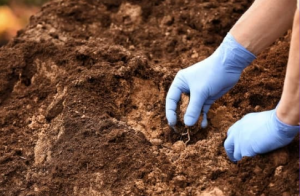
Soil pollution stems from both natural and human-induced processes. Natural occurrences, such as volcanic eruptions, soil erosion, continental dust, and urban runoff, contribute to soil pollution. Meanwhile, human activities, including governmental operations, sewage effluents, mining, air pollution, and fossil fuel combustion, also play a significant role. Metals like lead, copper, arsenic, and cadmium may naturally exist in soils and can pose threats to human and environmental health when present in high concentrations.
Environmental scientists must employ suitable methods and analytical instruments adhering to established regulatory methods and detection limits to ensure accurate results. This is crucial for preserving human and environmental well-being amidst the complexities of soil pollution.
Soil Sampling and Analysis using HPLC
HPLC is a versatile and powerful tool in soil analysis. It is particularly useful in speciating phenols and other organic compounds. It can distinguish between different forms of phenols, such as xylenols, cresols, resorcinol, and naphthol’s, providing detailed information about their presence and concentrations in soil samples, making it the instrument of choice for such analyses.
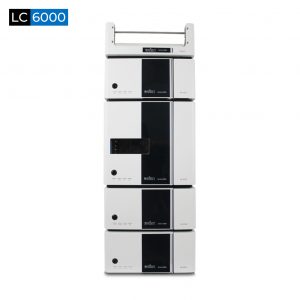
Designed to meet the demands of researchers and laboratories, our LC 6000 Liquid Chromatograph offers unparalleled precision and accuracy for a wide array of separation and analysis requirements. Furthermore, its upgradeable features empower users to tailor their configurations, enabling the optimal analysis of diverse sample sets.
Soil Sampling Test Using Gas Chromatography
Utilizing gas chromatography in conjunction with appropriate detectors proves to be an invaluable asset in soil analysis. Specifically, GC-FID (Gas Chromatography with Flame Ionization Detection) serves as a preferred method to identify petroleum hydrocarbons like GRO (Gasoline Range Organics) and EPH (Extractable Petroleum Hydrocarbons). The distinctive chromatogram pattern assists analysts in discerning the specific product types present in the soil.
Additionally, GC-MS (Gas Chromatography-Mass Spectrometry) is a pivotal tool in identifying various compounds in soil samples. It aids in detecting a spectrum of substances, including PaHs (Polycyclic Aromatic Hydrocarbons), VOCs (Volatile Organic Compounds), pesticides, SVOCs (Semi-Volatile Organic Compounds), and PCBs (Polychlorinated Biphenyls).
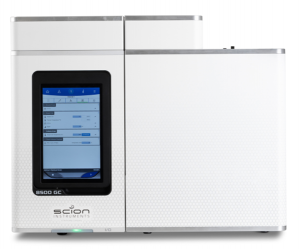
Delve into unparalleled precision and efficiency with our state-of-the-art GC Gas Chromatography solutions, meticulously engineered to redefine the standards of analytical excellence. These 8300 GC and 8500 GC are meticulously crafted to prioritize accuracy, speed, and reliability.
Their robust construction, complemented by seamless software integration, ensures flawless operation and delivers pinpoint accuracy, even in the most intricate analytical scenarios.
Moreover, our range of GC detectors is expansive, guaranteeing unwavering confidence in results, thereby empowering researchers and analysts to pursue their studies with utmost certainty and precision.
Related Application Note
Here to Help
If you are working in soil analysis and wish to speak to one of our applications experts to learn more about how our systems can help you, please get in touch.
